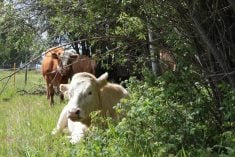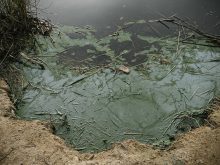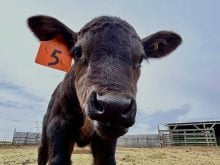With a lot of talk about the shortage of veterinarians, especially large-animal practitioners but also small-animal and emergency veterinarians, steps are being taken to increase veterinary school graduates.
It was recently announced that the University of Calgary vet school will expand from the current 50 students as of two years ago to 100 students within a few years. The plan sounds good, but the bottom line is we won’t see any great increase in graduates for about seven years, so what do we do in the meantime? I suggest livestock producers consider some strategies that may help the situation. The biggest apparent shortage of available veterinarians appears to be during calving season emergencies when many vets are also busy doing other herd work.
It is important for producers to have a good relationship with their veterinarian. Further, I would suggest it can be good for producers to affiliate with a clinic equipped with haul-in facilities for emergencies such as calvings and C-sections, as well as routine procedures such as calf examinations, post-mortems, prolapses and even the few semen evaluations.
Read Also

Cancer agency reclassifies another herbicide ‘probably carcinogenic’
The WHO’s cancer research agency has now put atrazine, a herbicide well known to corn growers, in the same potential-hazard category where the agency put glyphosate.
If you need these services, find a clinic that can handle them and be prepared to deliver the animal. This keeps the veterinarian efficient and able to serve a bigger area for emergencies if they don’t have to travel as much.
Vets may limit new clients
I have only just recently started to hear of clinics not accepting new clients and I thought that was only reserved for the human medical profession.
It is important for producers to encourage and work with female vets. They are the dominant gender in the profession now and I have met many that can definitely do anything that I did in practice. I have seen many a time that what they may lack in brute strength they make up for in technique and ingenuity. If needed they will ask for help.
As part of the newer era of veterinary care, keep in mind for large-animal herd work in particular that the quality of your handling facilities might play a big role. Faster processing for procedures such as semen testing and pregnancy checking may mean a lower cost of veterinary service, but also means the producer will have more time for other chores.
I can’t emphasize enough how a good handling tub system that leads to a hydraulic chute and palpation cage makes things go smoother and quicker. People are also less likely to lose patience, and both yourself and the veterinarian are not exhausted at the end of the day.
Some vets may be able to provide telemedicine services if they know your herd and you provide a short video or series of pictures. There should be a charge for these calls or the cost worked into your herd health care agreement but they still save you time and money.
Technician services available
The scope of experienced technicians is also expanding with procedures such as BSE testing or post-mortems. Pictures can be taken so the vet can later make the diagnosis. This helps to create efficiencies in large-animal practice.
The veterinary technician is a valuable part of the team so in the future perhaps regulatory work, sampling and specific herd visits — perhaps even pregnancy testing — may be carried out by technicians.
There is even a course now where technicians under the supervision of a veterinarian can do pregnancy testing and that could be expanded to palpation of heifers. Having the team approach at clinics is what is going to win the day. Even though an IV hook-up to calves is pretty rare these days, it is often something that a technician can do.
If you live in an area that is short of vets, this may be the time to look at efficiency measures and incentives. Perhaps a community clinic can be created or a scholarship set up to defray tuition costs for a specific vet student to apply for and return to the area to work.
The bottom line is to be working towards an environment that is sustainable and fulfilling for the young vet now and into the future.
It doesn’t accomplish anything for producers to get belligerent with a clinic that refuses to go out of area and away from their own clients to attend a calving emergency when the producer could bring the cow to a haul-in clinic. It may pay to ask your herd veterinarian what you are supposed to do in an emergency. In Alberta, at least the veterinary by-laws say you need to provide emergency service or have arrangements for vet services. Accessing those services could very well mean hauling animals into an emergency clinic.
I hope calving season goes well and you don’t need many of the calving and prolapse emergencies this spring. We veterinarians try hard to help you prevent these emergencies but the fact of the matter is they still can happen and need attention.















